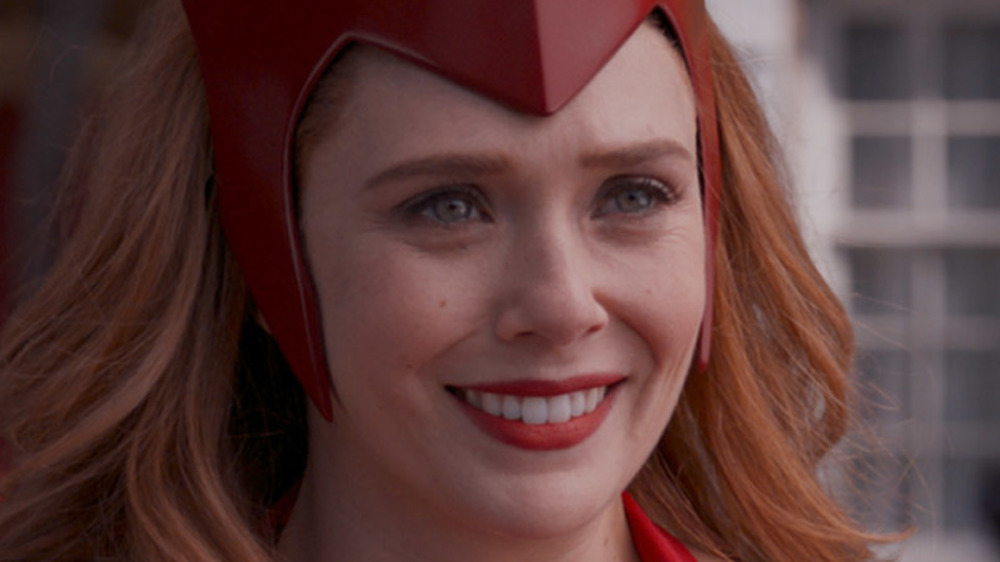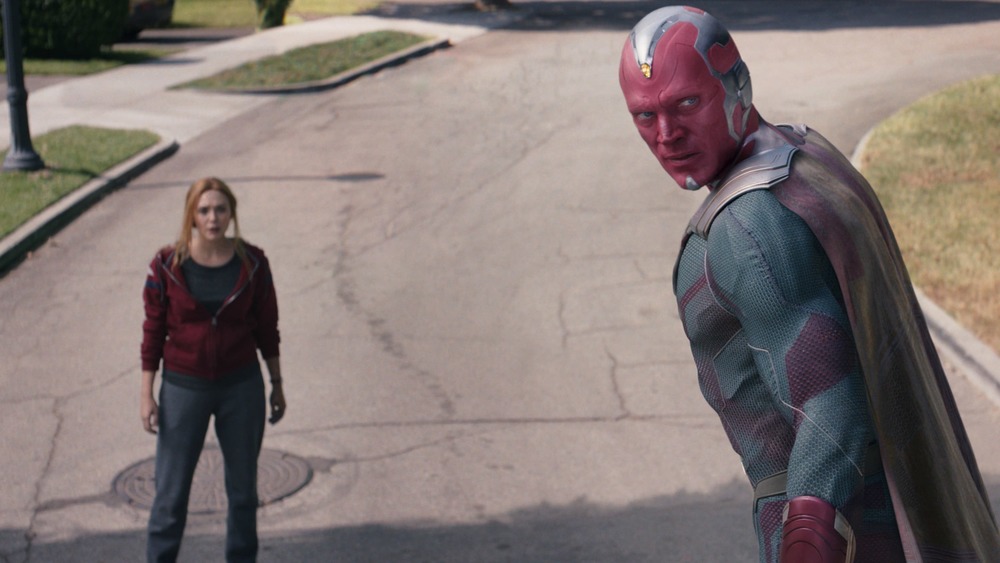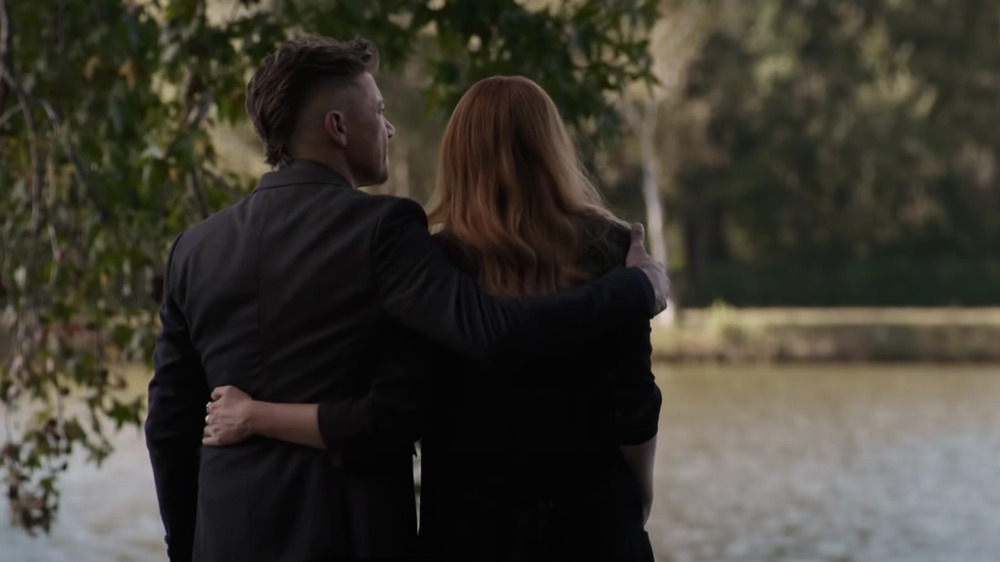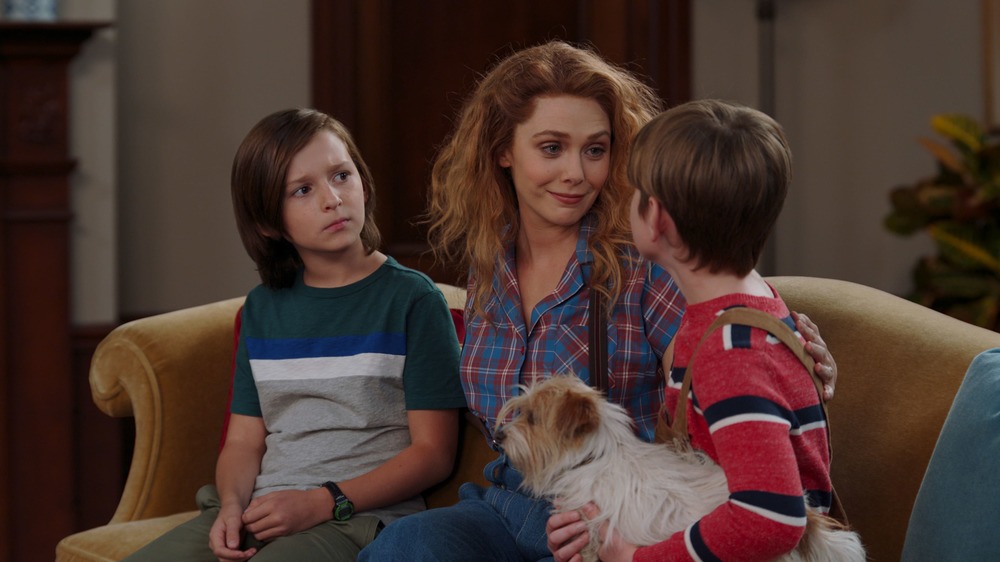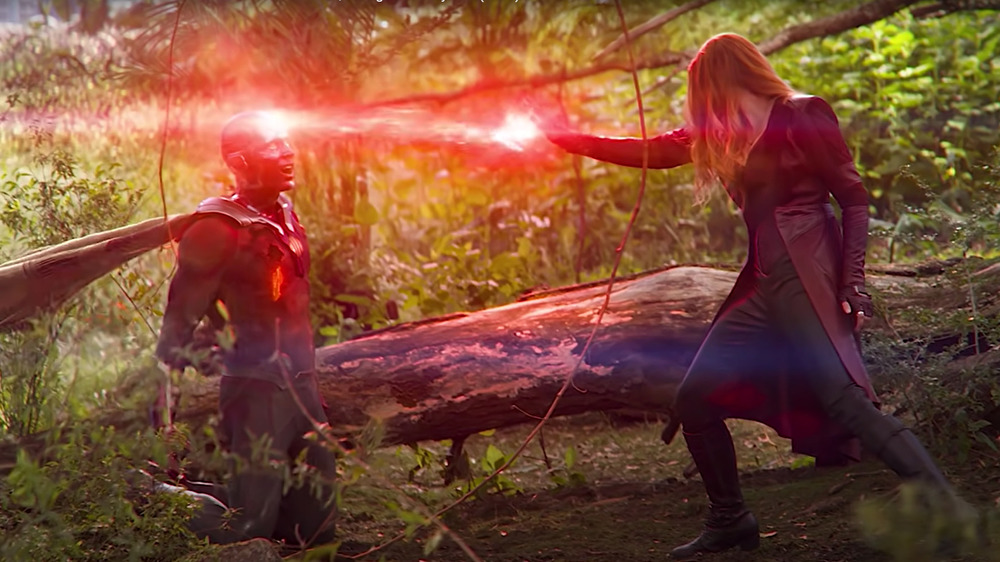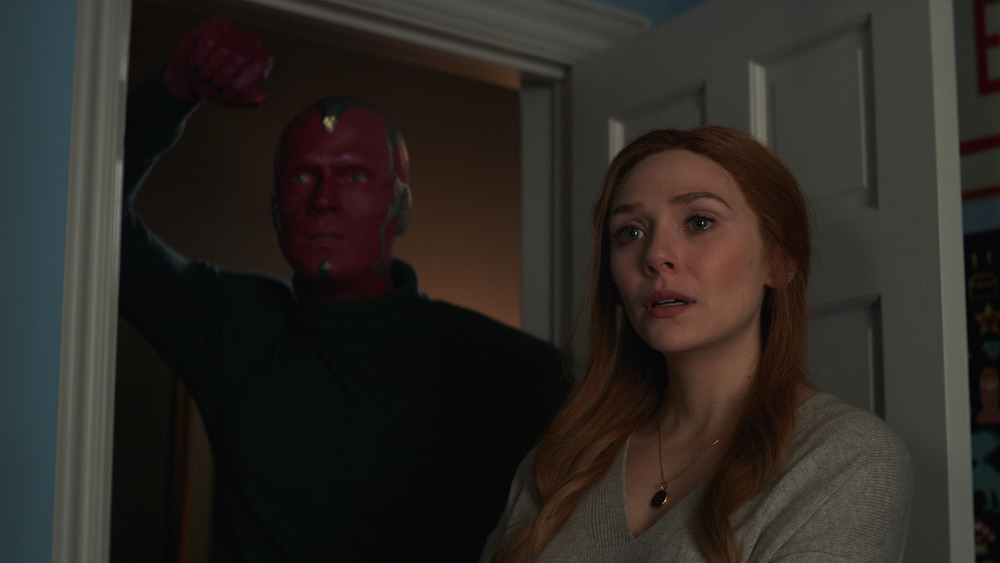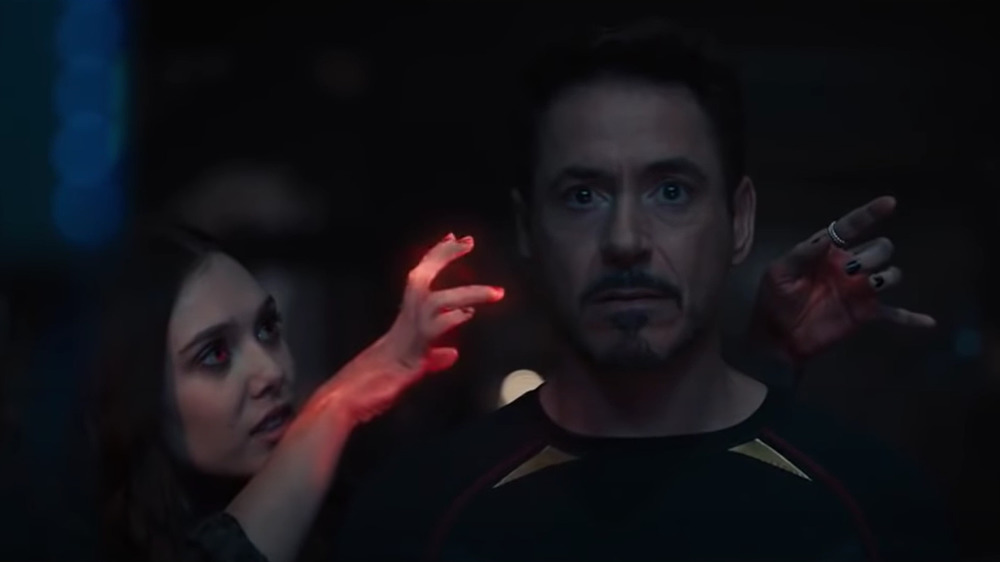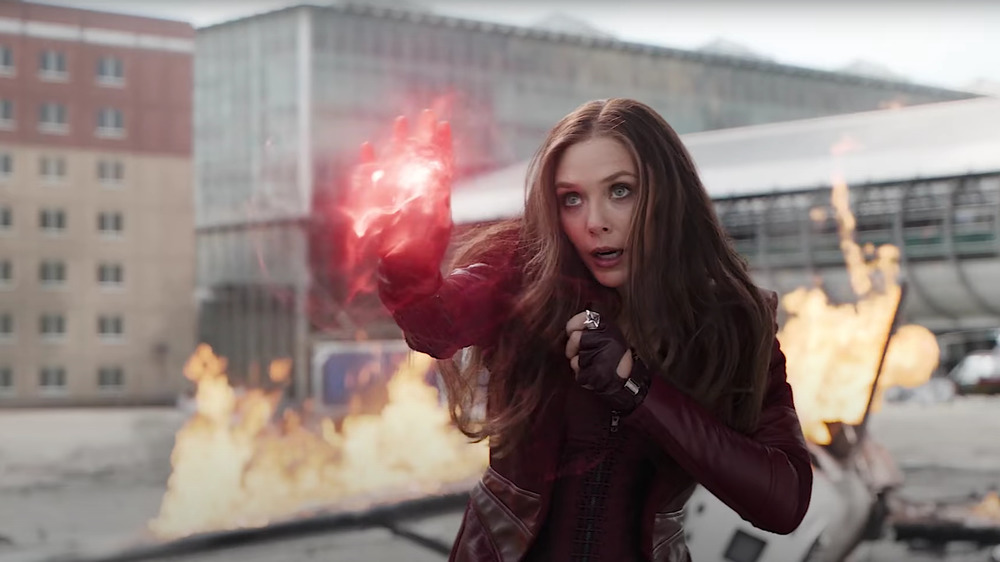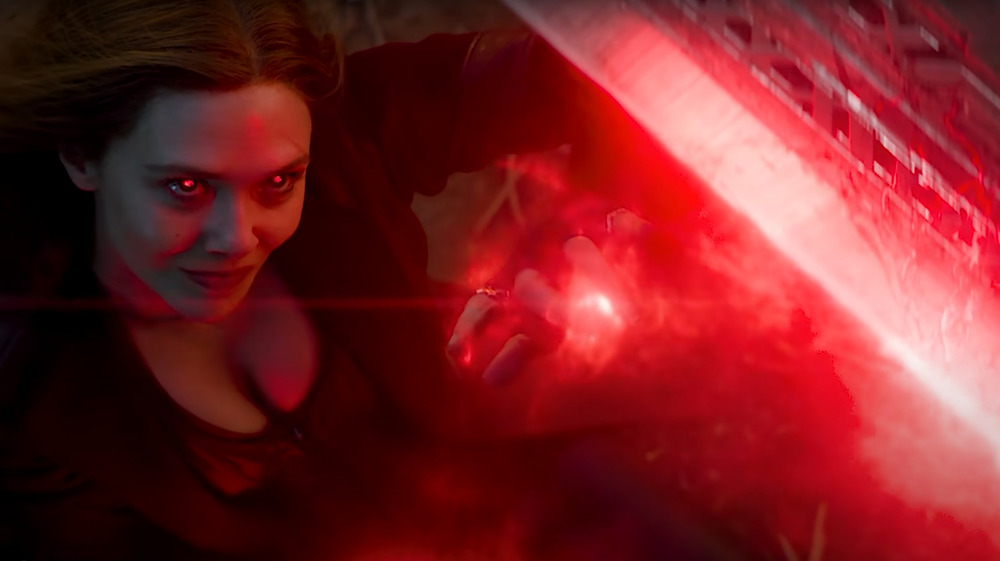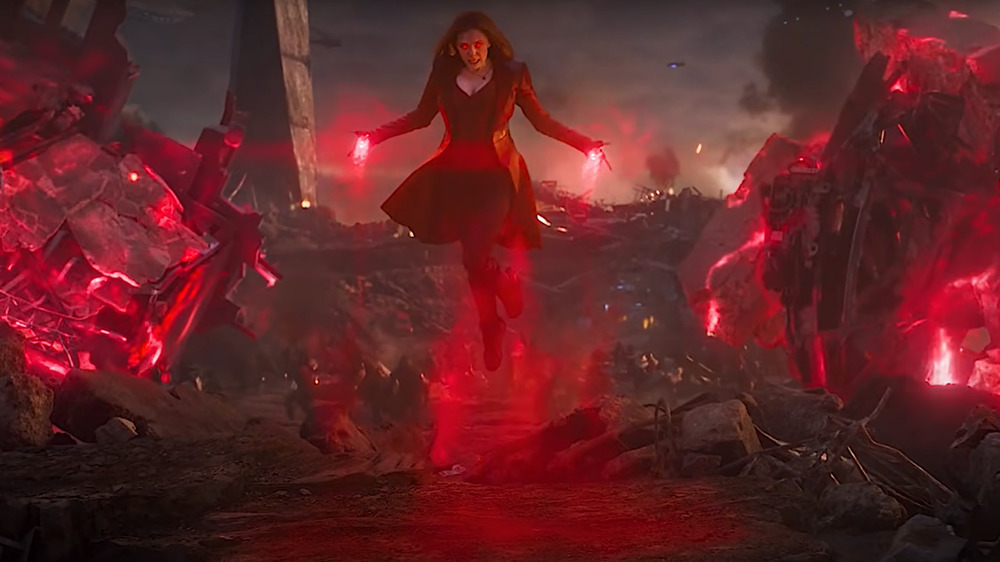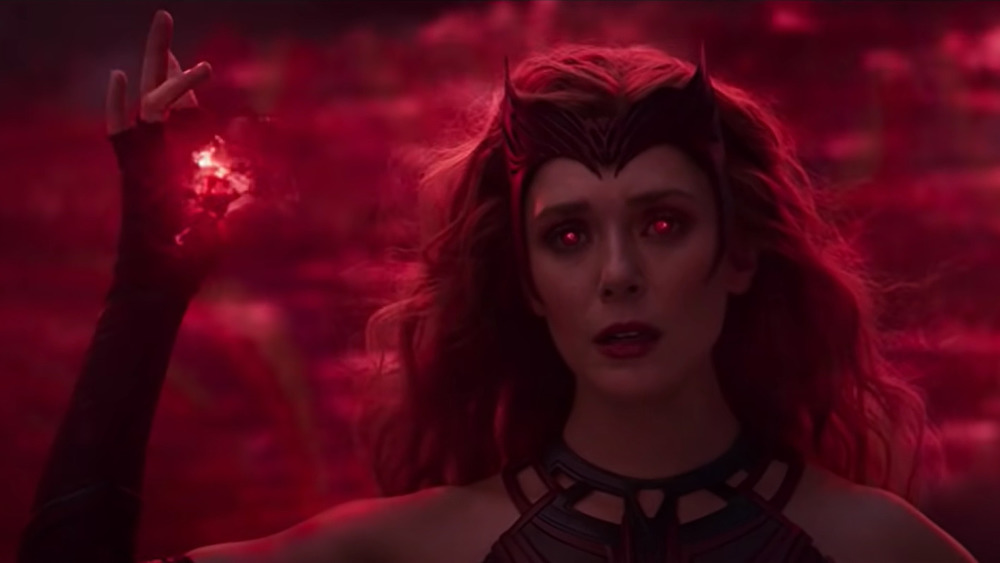Rules The Scarlet Witch Has To Follow In The MCU
The mid-credits scene in Captain America: The Winter Soldier reveals that Strucker and Dr. List have survived HYDRA's defeat, and remain hidden away in a secure scientific facility. Having acquired Loki's scepter from the first Avengers film, they've been using its power in their experiments, resulting in the creation of "the twins:" A pair of young Sokovians who have been imbued with fantastic power. "It's not a world of spies anymore, not even a world of heroes," Strucker says, watching them. "This is the age of miracles, doctor. There's nothing more horrifying than a miracle."
You couldn't ask for a better introduction to Wanda Maximoff, also known as the Scarlet Witch. Wanda and her speedy brother Pietro fully enter the MCU in Avengers: Age of Ultron. Though Pietro's MCU career ends in a stream of bullets in the film's third act, Wanda goes on to have a major role in the third and fourth Avengers movies, as well as Captain America: Civil War (which is a honorary Avengers movie). And of course, in 2021, she finally took the spotlight in WandaVision, a show that seemingly removes all limitations on both Wanda's accent and her superpowers.
Despite all of WandaVision's revelations, however, there are still a few rules that even the legendary Scarlet Witch has to follow when she appears in the MCU — and we're here to count them off. Warning: Massive spoilers ahead!
Wanda must be connected to Vision
Wanda and Vision's bond goes way back: In Age of Ultron, Wanda connects with him before he's even brought online. "I can read him," she says, standing above the scientific cradle in which Ultron is constructing his technological masterpiece. "He's dreaming." By the film's end, Wanda and Vision have met in person after he saves her from certain death as Sokovia falls from the sky. Their relationship is clearly stronger in Civil War, and while they end up on opposite sides of the conflict that tears the Avengers apart, we learn in Infinity War that they reconcile. In fact, they've been seeing each other secretly, and their tragic romance forms one of the film's major emotional cores. In Wanda's brief Endgame appearance, the loss of Vision is front and center as the fuel of her fury.
Naturally, the love between these two heroes is the key element of WandaVision, which sees Wanda use her abilities to functionally re-create her "husband." While this facsimile dies again in the finale, there's a re-constructed white Vision now flying around the MCU with all the memories of the original. What might this lead to? No one yet knows. But we can safely guess that Vision, either in person or as a memory, will continue to matter to Wanda in a major way.
Wanda must be connected to Hawkeye
Jeremy Renner's Hawkeye is easy to overlook. He has little in the way of personal relationships with the other heroes, with the obvious exception of Black Widow. But there's actually another exception: Hawkeye has a low-key consistent friendship with Wanda. In Age of Ultron, when Wanda is using her powers to poison the minds of the Avengers, Hawkeye is the one who's able to stop her. When she has a crisis of confidence in the third act, Hawkeye is the one who convinces her to use her abilities to fight Ultron and become an Avenger herself. He's also the person Pietro dies to save. Then, in Civil War, when Steve Rogers decides that Wanda shouldn't be imprisoned for her mistakes, Hawkeye is the one sent to free her — and, more importantly, give her another pep talk and convince her to free herself.
Hawkeye doesn't appear in Infinity War, and Wanda barely appears in Endgame, though they do share a moment of mourning at the end of the latter film. But there are hints of their continued connection in WandaVision. While we know Wanda based the warped reality of Westview on old TV shows, it can't be ignored that the thing she wants more than anything is a family. As it happens, the only Avenger she has a strong link with, other than Vision, is the one Avenger who prioritizes family above all else.
Wanda must search for family
Wanda's longing for family runs deep: It's something she has to deal with pretty much every time she's on screen. Now, the idea of "found family" — fostering strong relationships with friends and teammates and deciding who counts as family, regardless of blood ties — is a major theme of the MCU as a whole. But it is particularly embodied by Wanda, whose motivations are always tied to her loved ones. The death of her parents drives her actions from the beginning, as we learn in Age of Ultron. In Civil War, just as she's begun to find something resembling family, she becomes the point of contention around which said family falls apart. Yet in Infinity War, it becomes clear that the bonds of the Avengers team that Wanda was part of at the beginning of Civil War –- encompassing Captain America, Falcon, and Black Widow –- are still very much intact. They all consider both Wanda and Vision part of their family.
By the conclusion of Endgame, however, that family appears to have been shattered for good. Black Widow and Vision are dead, Captain America is an old man after going back in time to live the life he wanted, and Falcon sets off somewhere with Bucky Barnes. As such, a desolate Wanda is forced to create her own family in the most literal way possible, setting in motion the events of WandaVision.
Wanda must sacrifice herself for others
Every time Wanda shows up in the MCU, she's forced to choose between herself, her loved ones, and doing the right thing. Like any superhero worthy of the name, she always chooses to make the personal sacrifice. We see the beginnings of this tendency in Age of Ultron, after Wanda and Pietro join the Avengers in their attempt to foil Ultron's plans to destroy humanity. Wanda immediately takes to the role of savior, helping to evacuate Sokovia and defend its people while they escape. She also volunteers to defend the key to the device Ultron needs to drop Sokovia from the sky, putting herself in danger in the process.
After Wanda saves Captain America's life in Civil War, an action that inadvertently causes many deaths, she agrees (at least at first) to be kept apart from others for their own safety. Then, in Infinity War, she's forced to make the ultimate sacrifice in destroying the Mind Stone, thereby killing Vision, to prevent it from falling into Thanos' hands. Wanda's most dramatic sacrifice of all arrives in the WandaVision finale, when she willingly undoes the Hex surrounding Westview, freeing its people and destroying the husband, children, and happiness she had created for herself. Wanda has sacrificed a lot, and it's a testament to her character that she's still ultimately able to make the right choice.
Wanda must be defined by grief
WandaVision is a show about grief: How it affects us, how it challenges us, and how, no matter how hard we try to run from it, we must ultimately confront and deal with it. In short, it's the perfect vehicle for a character like Wanda, who is defined by grief more thoroughly than any other character in the MCU.
Wanda's origins lie first and foremost in the deaths of her parents. She isn't even through her first real film before losing her brother, too — a loss that draws her away from Ultron's key and allows the device to be activated, causing Sokovia to begin to fall. We see more of the emotional fallout from Pietro's death in WandaVision, which explores just how deeply Pietro's loss affected her, along with Vision's death in Infinity War. Even in Civil War, Wanda is stricken with grief for the people she accidentally kills in Lagos, and her rage against Thanos in Endgame is driven by grief as well.
By the end of WandaVision, when she lets both Vision and her children disappear along with the Hex, it seems as though Wanda has finally learned how to deal with grief in a healthy way. But then we get the post-credits scene, which might imply she's looking for a magical way to reverse that final sacrifice. If that is, in fact, the case, her emotional arc might not have wrapped up quite so neatly after all ...
Wanda must ride the line between good and evil
Many fans expected Wanda to go bad in WandaVision, or at least go crazy. After all, one of her best-known comics storylines involves her suffering a mental breakdown after losing her children. Of course, things don't exactly go down that way, but there's still plenty of time for Wanda to break bad. It would make a certain sense: Despite her propensity for self-sacrifice, Wanda always seems to be edging uncomfortably close to the dark side.
It's notable that Wanda does start out as a villain in Age of Ultron. Though she ends that film as an Avenger, her next appearance in Civil War sees several of her teammates, along with the public and the government, turn against her after the disaster in Lagos. WandaVision, meanwhile, sees Wanda basically enslave an entire town so she can re-enact her favorite scenes from The Dick Van Dyke Show. Finally, seeing her engage in unsupervised experimentation with something called the Darkhold isn't making us any more confident in her untarnished altruism. While it's nice to see WandaVision end with both her mind and motives intact, Wanda has been pushed so far and brought to the edge so often that her eventual fall from grace seems almost inevitable.
Wanda's abilities must be inexplicable
If you can count on anything when it comes to the Scarlet Witch, it's that her powers will never be satisfactorily explained. Honestly, WandaVision is the only story so far that's even made an attempt. Supposedly she got her abilities from the Mind Stone, which makes a certain kind of sense — Wanda is telekinetic, can sometimes read minds, and can inflict nightmarish visions on her enemies. But why the Mind Stone would give her the ability to fire energy bolts (or, for that matter, why it would give Pietro super-speed) is a question the MCU has simply never cared to answer. From Age of Ultron to Endgame, her powers have been remarkably inconsistent, and we've just been asked to go with it. And that's all before she started fundamentally rewriting reality.
WandaVision tries to provide some explanations, but it ends up muddying the waters. Wanda's powers are now apparently magic — she cast a probability hex on a Stark bomb as a child — but it's unclear how, exactly, they interact with her experience with the Mind Stone. She's also now a legendary spellcaster destined to destroy the world, apparently. But also, Westview Vision was the part of the Mind Stone that lives inside her. We're so confused. But that's how it always is with Wanda: In the comics, the nature of her powers has changed so often, it's impossible to keep track. Why would it be any different in the MCU?
Wanda must be extremely powerful
If anything about Wanda's powers has remained consistent over the years, it's that she's a seriously heavy hitter. She wreaks havoc on the Avengers in Age of Ultron, and the vision she shows Tony Stark is the reason he creates Ultron in the first place. She doesn't stand out as much in Civil War, but her abilities are the reason for the Sokovia Accords, and she does manage to telekinetically hold up a building long enough for Captain America and Bucky Barnes to escape the fight at the airport. Then there's Endgame, in which she single-handedly takes on Thanos and does so well that he's forced to order a massive aerial attack.
In Infinity War, Wanda is able to use her power to destroy the Mind Stone, which she's able to do because the Mind Stone is what fuels her own power (you know, kind of). Wanda's connection to the Infinity Stones is initially the thing that makes her as powerful as she is: In WandaVision, she suddenly finds herself with the power of "spontaneous creation," which, interestingly, mirrors the abilities of the Reality Stone, which also has a red power signature. Now, with the revelation that she's actually a legendary sorceress who is apparently more powerful that Doctor Strange, Wanda has risen to entirely new heights of mightiness. With a little more knowledge and practice, she could very well become the most powerful character in the MCU.
Wanda absolutely has to throw things
We still have lots of questions about where Wanda's powers come from and how they work — especially since, by the end of WandaVision, she seems to have the potential to do basically anything she wants. However, none of that changes the one thing that Wanda uses her powers for every time she appears: throwing stuff. This tendency starts in Age of Ultron, which features her tossing around Ultron robots like they're nothing. In Civil War, she throws an entire fleet of cars at Iron Man during the airport fight, and prior to that, she throws Vision, who goes through several floors of Avengers headquarters before crashing to a halt. In Infinity War, she picks up several of Thanos' alien war machines at the same time before sending them flying into his army. In Endgame, her very first tactic against Thanos is to hit him with several of the gigantic pieces of rubble surrounding them on the battlefield.
WandaVision is a much subtler and less combative story, but if you think it's the exception to the rule, you'd be wrong. In the third episode, Wanda launches Monica Rambeau into the air, sends her careening through several walls, and deposits her outside the Hex. Then, in the finale, she goes back to an old favorite and hits Agatha Harkness with a car. Mind reading and reality warping are things Wanda can do, but throwing stuff is something she has to do.
Nobody can call her the Scarlet Witch (until they do)
For the first seven years of her MCU career, Wanda Maximoff was unique in that the code name she uses in the comics was never once uttered on screen. The original six Avengers all use their comic book names –- even Hawkeye has been occasionally referred to as Hawkeye -– as do supporting characters like War Machine and the Falcon, even if their given names pop up more often. "The Scarlet Witch," on the other hand, went unsaid by anyone during all of Wanda's appearances in the MCU. Maybe it's because of the complicated rights issues between Marvel and Fox, or maybe Marvel just wasn't yet ready to weave magic into her origin story. Whatever the reason, until 2021, Wanda was known simply as Wanda.
That changed in the eighth episode of WandaVision. After taking Wanda on a tour of her own traumatized history and learning that she is far more powerful than anyone believed her to be, Agatha Harkness is taken aback. "This is chaos magic, Wanda," she says. "And that makes you the Scarlet Witch." This long-awaited moment, combined with Wanda at last donning her iconic costume, represents her finally taking her place in the MCU. For years, she's felt like an oddity, a character who hadn't fully made the transition from page to screen. Now, the Scarlet Witch has officially arrived, and the MCU will never be the same.
